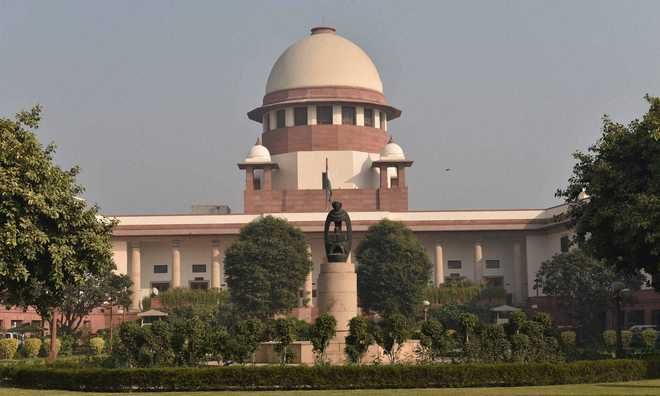
The top court was hearing a PIL filed in 2013 by Common Cause (an NGO) seeking a direction to the government to allow community radio stations to air news and current affairs. File photo
Satya Prakash
Tribune News Service
New Delhi, February 14
The Supreme Court on Tuesday asked the NDA government to consider allowing community radio stations to broadcast news bulletins based on already-published material in print and electronic media, going beyond the existing policy that permits them to use only All India Radio’s news content.
A three-judge bench headed by Chief Justice of India JS Khehar gave the central government six weeks' time to clarify its stand. If the government should decide against it, reasons for its decision must be stated in its affidavit, the Bench told the government counsel.
The top court was hearing a PIL filed in 2013 by Common Cause (an NGO) seeking a direction to the government to allow community radio stations to air news and current affairs.
The court’s direction came after senior counsel Jayant Bhushan contented that the government’s stand of not allowing private radio operators to offer news and current affairs content went against Article 19(1)(a) of the Constitution that guaranteed right to freedom of speech and expression.
He said the government could not create a monopoly over news on radio as it would be beyond the purview of Article 19(2) that prescribed certain reasonable restrictions on free speech.
The NDA government has ruled out allowing news and current affairs programmes on community radio stations, saying it could pose serious security risk to the country in the absence of a mechanism to monitor live content. In its affidavit filed in the top court last week, the Ministry of Information and Broadcasting said: “These stations may be exploited by foreign radical organisations to broadcast fabricated/radical views…”
Citing the objections raised by the Ministry of Home Affairs, the affidavit said: “As these stations/channels are run mainly by NGOs/other small organisations and private operators, several anti-national/radical elements within the country can misuse them for propagating their own agenda”.
The government had said: “Unlike television, which is an omnibus medium, FM Radio caters to disparate audiences of much smaller size…Such a situation calls for local monitoring throughout the country, which is a complex issue”.
The Bench said allowing news on community radio stations could create trouble in communally sensitive areas or otherwise disturbed areas like the northeast.
However, Bhushan contested the government’s claim, saying “If they (community radio stations) can’t be regulated, how can be given licences? What if they broadcast news or some objectionable content without any permission? How will the government check it? Absence of regulation can’t be a ground to deny right to free speech?”
Broadcasting news and current affairs programmes on radio is currently the exclusive preserve of All India Radio (AIR) and private FM Radio operators and community radio stations are not allowed to offer such content.
“Any shift in this policy would necessitate adherence to a rigorous code of conduct, a proper monitoring mechanism and penal provisions for violation of such broadcast code,” the affidavit read.
Community radio stations were started under the 2002 Policy Guidelines, which were later revised in 2002, 2006 and 2017. Such radio stations are meant to be set up and operated by the local community. A typical community radio station covers a radius of 10-15 km and could be set up at a cost of Rs 10-15 lakh.
The government had issued letters of intent to 519 commuinity radio stations but only 201 of them are operational.
In December 2002 many educational institutions, including IITs and IIMs were given licences to run community radio stations. In 2006, the Ministry of Information and Broadcasting came out with another Policy Guidelines which said community radio stations should focus on developmental, agricultural, health, educational, environmental, social welfare, community development and cultural programmes.
Programmes should be in local language and at least half the content should be generated with the participation of local community, the policy stated. However, it banned broadcast of any programme “which relate to news and current affairs and are otherwise political in nature.”
In January this year, the Centre allowed community to broadcast news and current affairs contents “exclusively sourced from AIR in its original form or translated into local language/dialect without any changes”, if such contents related to sporting evetnts, traffic, weather, examinations, results, admissions, career counseling, employment opportunities and public utilities.



























